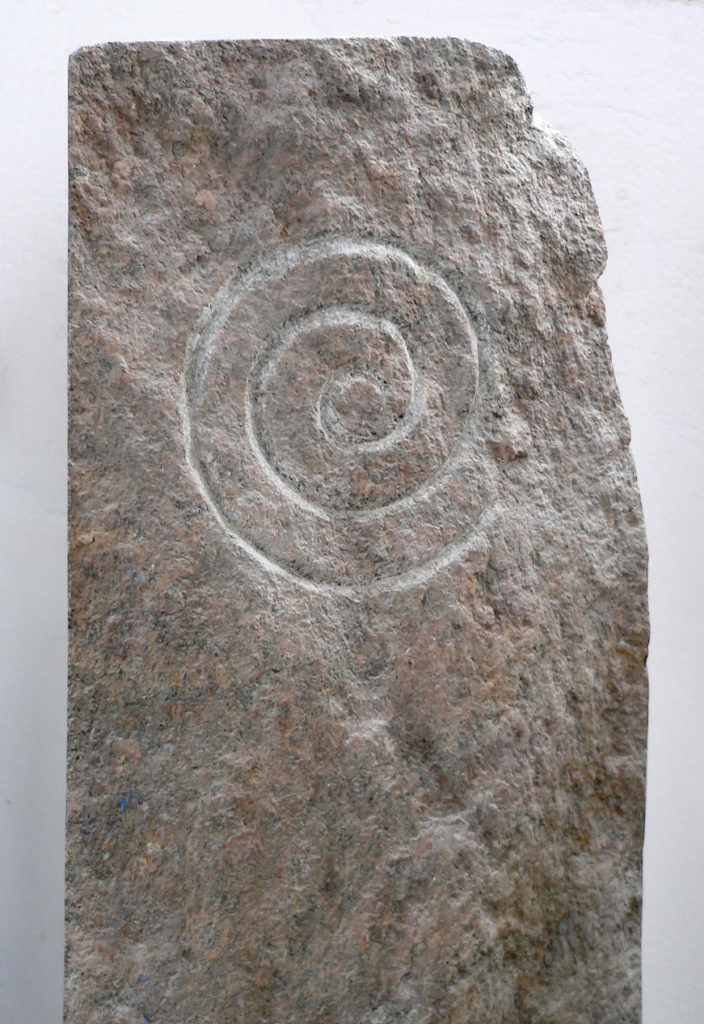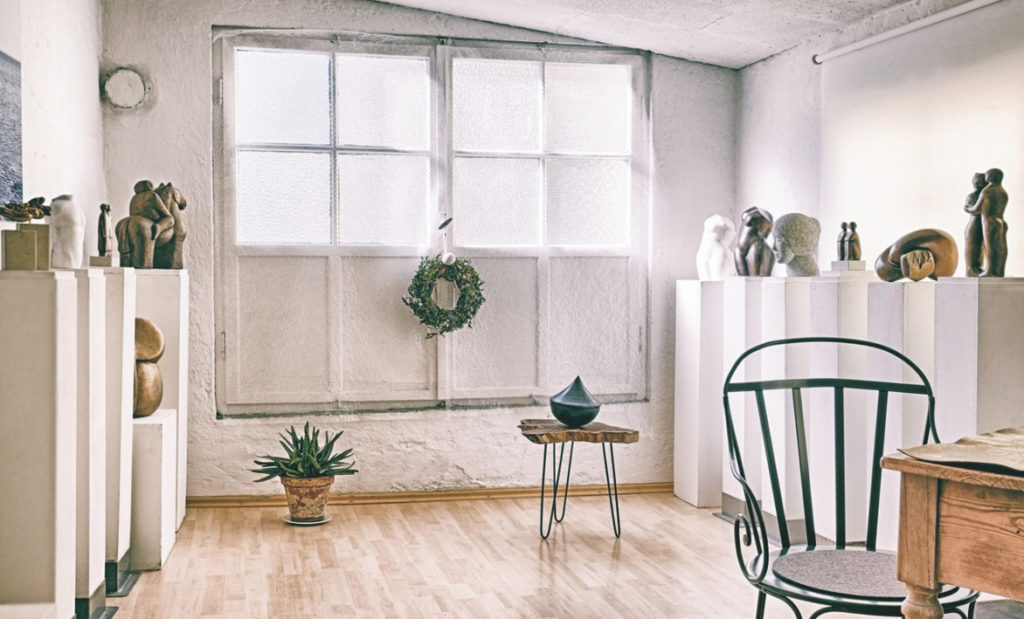Hard Materials, Tender Feelings
A conversation with sculptor Erika Hacker (1950-2023)
Han Yan
In the annual exhibition of the Artist Association South Munich in Pullach (October 9 – 22, 2014) a bronze piece (img.1 Remember, bronze, w.30 cm) immediately attracted my eye. It is a very abstract object. Two strips are intertwined forming a large knot, which stands for memory and connection and can be seen as a symbol of problem solving. This shape makes the hard material of bronze lighter, making one not suspect that it is a cast stone. This enchanting sculpture was created by the sculptor Erika Hacker (Born in Nuremberg, she studied graphic design at the Werkkunstschule Augsburg from 1968-1972. In 1987 she created her first sculptural works in Munich. In 1992 she became a member of the Artist Association of the pavilion in the old botanical garden and since 1996 she has been one of the artists of the Isolde Weiß Gallery in Munich with regular exhibitions in Germany and Switzerland). After the exhibition, I met her in her Munich studio and talked with her about her artistic work.
Q: I noticed that you often depict the theme of couples (img.5 Couple, bronze, h.26 cm) and two-part forms, such as Origin (img.2 serpentine/granite, w.37 cm). Is it an expression of your worldview and is it influenced by Chinese Daoist* theory?
* Daoism is a Chinese philosophy and worldview. The word Dao originally meant way. But it can also be understood as method and principle. Through the action of the Dao, creation is brought forth by two-ness, the Yin and the Yang. Yin is associated with the idea of coolness, femininity and darkness, while Yang is associated with warmth, masculinity and lightness. The two opposite terms always alternate and unite a certain idea of the change, so that the cosmos can hold the balance.
A: Doubles and couples are interesting for me because they occur in nature and in our lives. It doesn't necessarily have to do with Daoism. The sculpture Origin is an example of how this work can work together or stand on its own. Fitting and joining into one other is a challenge in terms of craft.
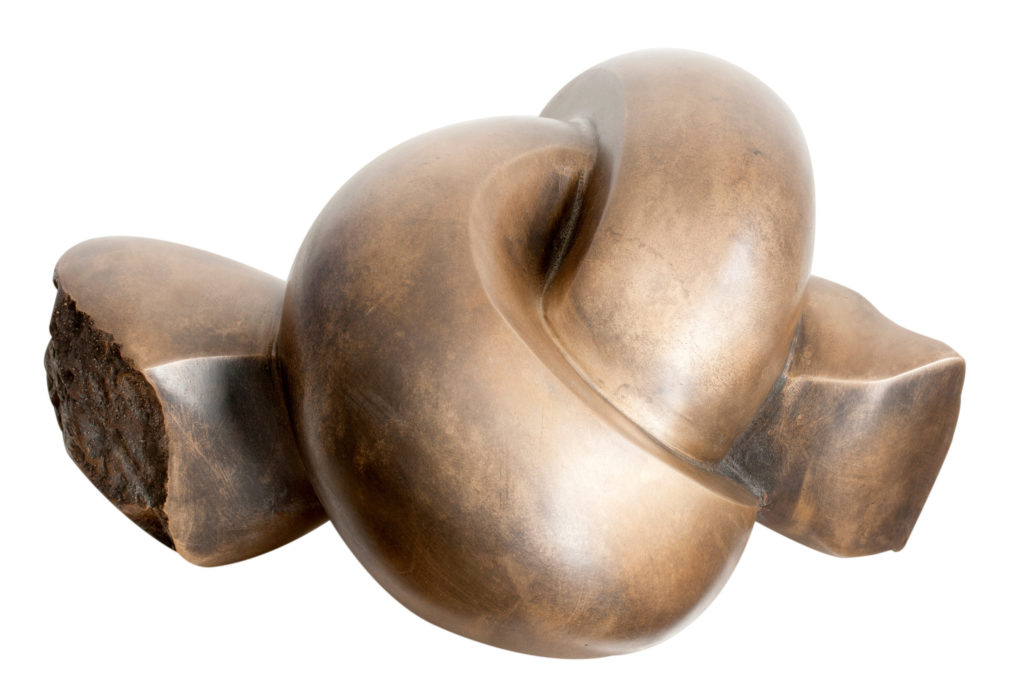
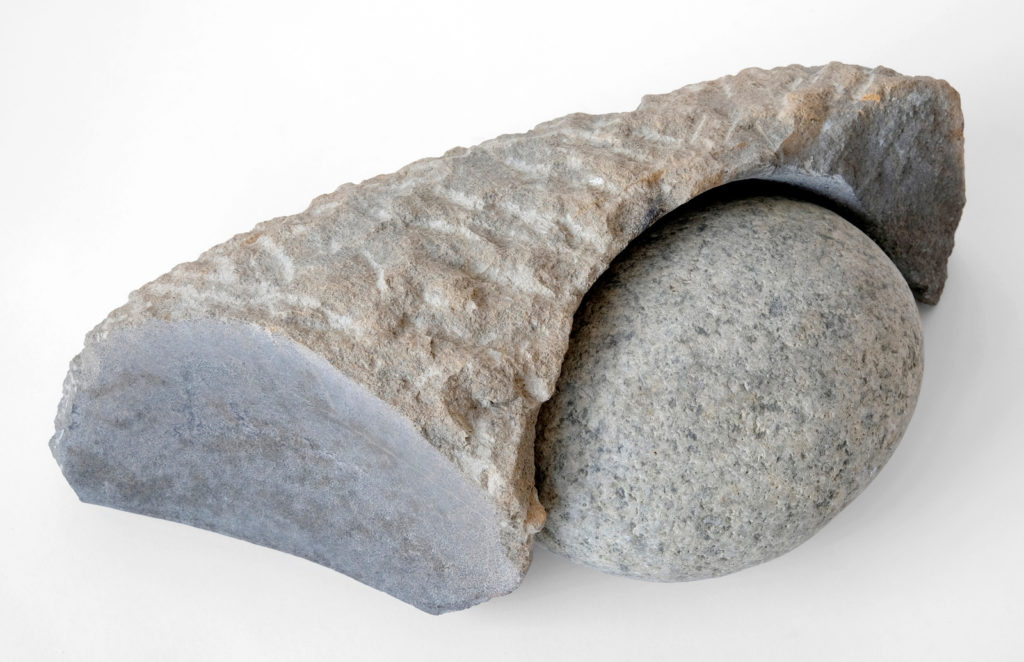
Q: In the studio there are several rectangular raw materials. How do you implement your artistic concepts on such hard stones and what is the process?
A: Working with stone is a very different process from the art of painting. Sculpture means taking away, i.e. removing the material. In the beginning there is a sketchy idea. Small clay models are the starting point. This is the artistic work. Finally, the idea has to be transferred to the hard material. This requires an exact transfer to scale. Then the craft work with hammer and chisel begins. I expose the image already present in my head.
Q: I love your Torsos (img.3–4). What does this theme mean to you?
A: The representation of human bodies, torsos, is very interesting for me, because they show the difference between female/male and the their body postures. The viewer can only guess moods such as sad, happy, ugly or pretty. I prefer alabaster as material, which makes the sculpture appear very soft because of its translucence. Of course, I also use harder materials such as shell limestone and diorite, which are very suitable for outdoor use.
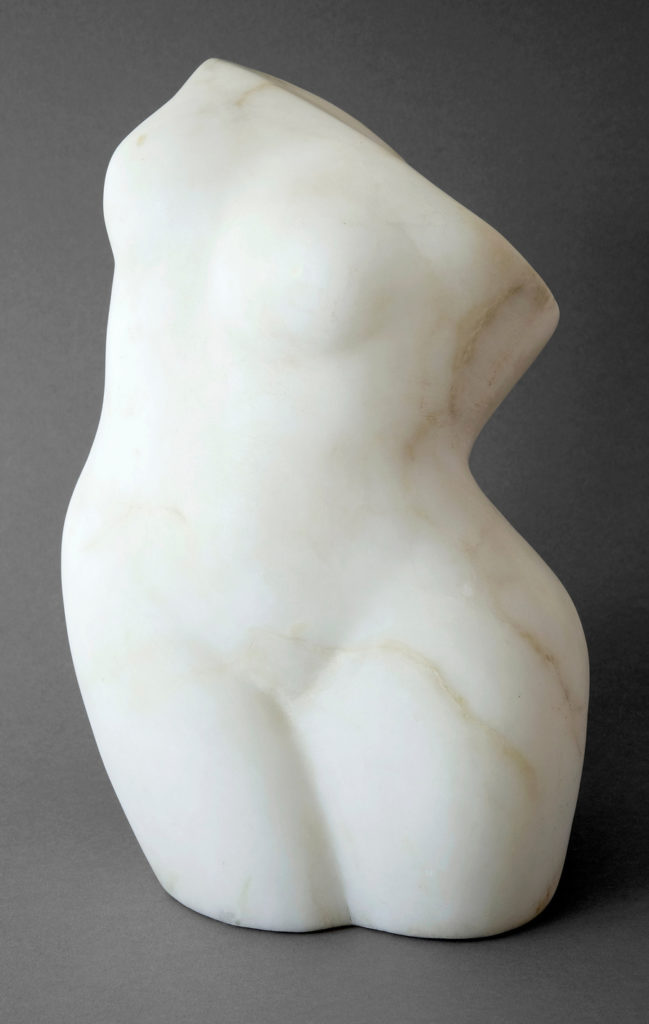
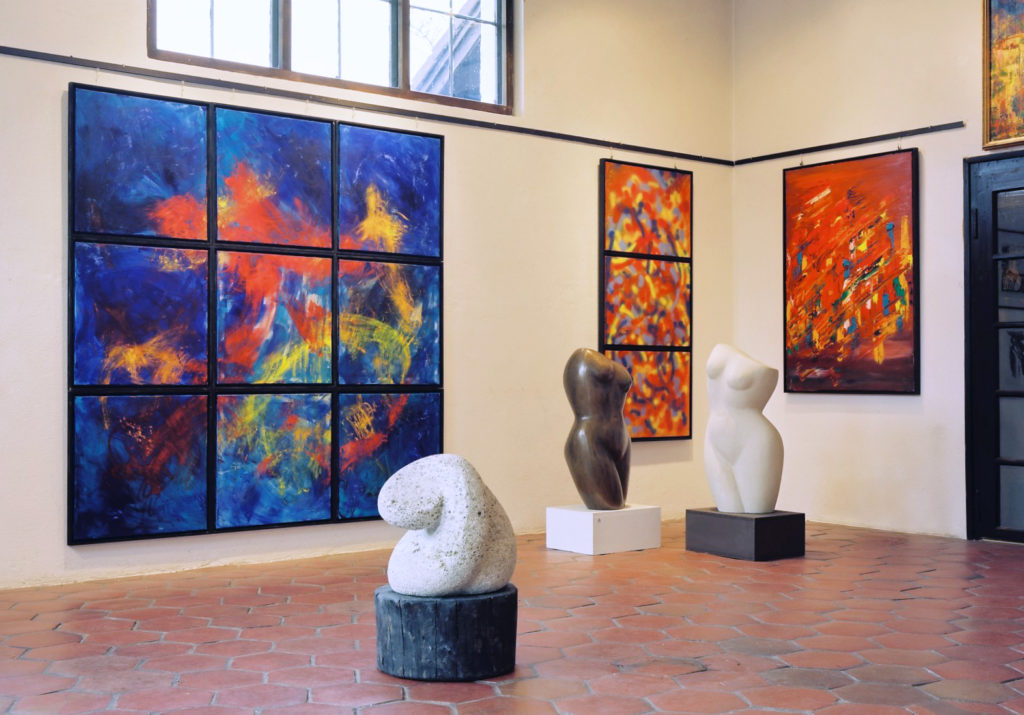
Q: Many of your works convey a calm, meditative feeling. Why did you make this aesthetic choice?
A: In the 80s, naturalistic depictions of people and animals were not in demand. For me, it was a challenge to create these subjects freely in my personal style. Nature and my surroundings act as my source of inspiration. The sculpture Inner Peace (img.4 shell limestone, h.55 cm) I created when my daughter was expecting her child. During this time, she radiated peace. It is my personal expression to the world.
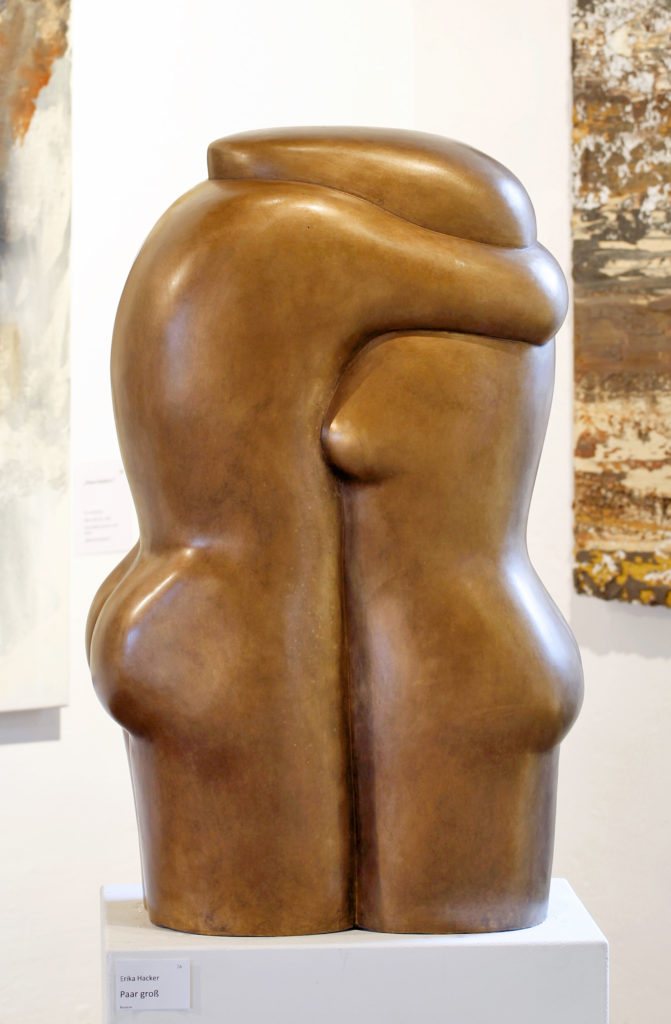
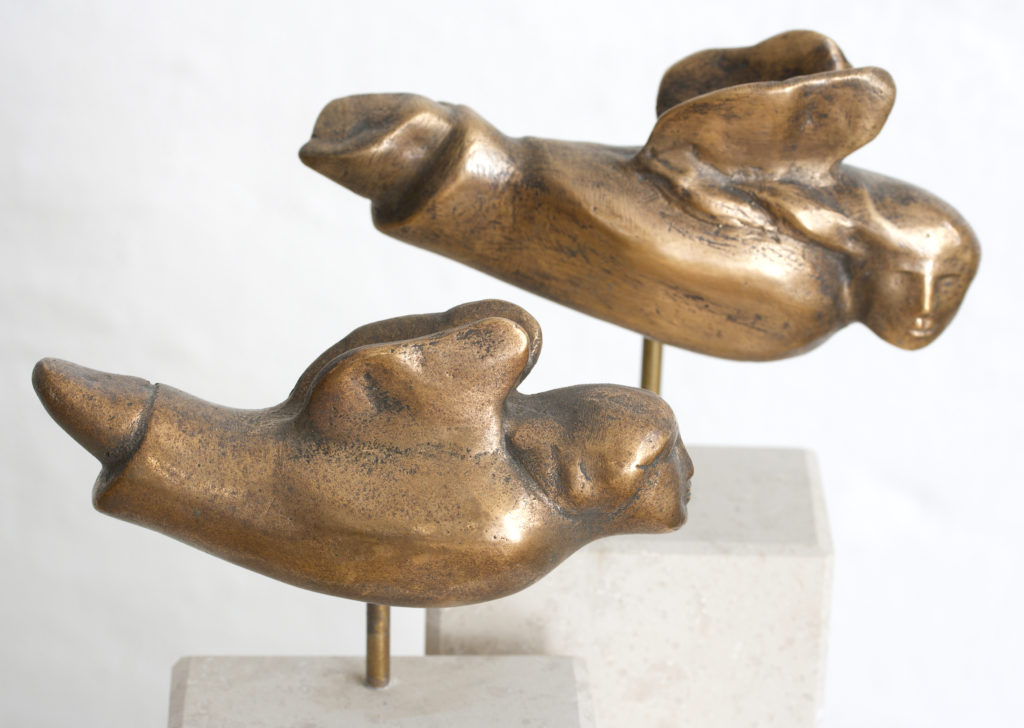
Q: You give each sculpture a title. Do you want to give the viewer certain information?
A: I don't like to use Untitled, because I have a certain idea as a starting point for my works. In my experience, the viewer likes to have a title, which gives them access, especially to the abstract works. Of course, everyone is free to see their own view of the sculpture.
Q: I just saw a stele (img.7) on the first floor of your studio. It is larger than the other works. Could you talk about this extraordinary piece?
A: Actually, when I saw this stele, I was thinking of my family gravesite. Many people don't want to touch on death, but for me it is part of life. It's a strong theme for artists to be able to create an individual symbol for people. While they are alive, it can stand in the garden and they can enjoy the sight of it.
